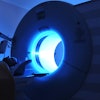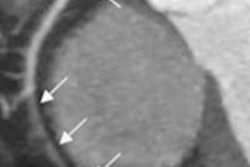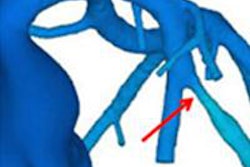It's true that some proportion of patients is exposed to large numbers of CT scans. But the characteristics of these patients and their doctors are consistent with reasonable medical decision-making, according to new research published online in the Journal of the American College of Radiology.
High use of CT scanning is of growing concern to healthcare providers, payors, and patients, noted the authors from the University of Minnesota and Arizona State University. One example is the increased use of CT in emergency departments, which can cause controversy given its cost, radiation exposure, and the likelihood of identifying incidental findings that may lead to further imaging exams.
"Since its introduction in the 1970s, CT scanning has become an important tool in medical imaging," wrote lead author James Begun, PhD, and colleagues. "However, CT scans are not harmless procedures, and there are questions of appropriateness as well as overutilization."
Begun's group analyzed 310,467 CT scan claims from 2009 to 2010 in a health plan serving 1.5 million members. The researchers classified referring physicians and their patients who had CT scans into utilization categories, and they identified characteristics that distinguished categories with higher utilization from those with lower usage (JACR, November 6, 2013).
What did the group discover? Among patients receiving CT scans, factors that characterized higher from lower utilization included being male, older, and in poorer health; seeing more providers; using more prescription and total healthcare resources; and having government insurance. Among physicians ordering scans, factors that characterized higher from lower referrals for CT scans included being male, being board-certified, and being in group practice. High referral rates were not associated with the referring physician's affiliation with the scan provider.
"In sum, none of the associations suggested an obvious problem with overutilization," Begun and colleagues wrote.
The authors conceded that analyzing aggregate insurance claims may not be specific enough to identify CT overuse patterns, and they suggested that future research could concentrate on the following issues:
- Special medical conditions: "Studies focused on conditions for which scans are elective would be useful in identifying factors that influence overuse," Begun and colleagues wrote. "For such conditions, it would be possible to compare high-utilizing patients with similar patients to examine how higher and lower utilizing patients differ."
- Thorough review of claims by high utilizers: Identifying the patients and physicians who use CT the most and reviewing the data for these groups, particularly disease-specific data, could clarify reasons for high utilization.
- Development and testing of ownership interest measures: Self-referral of scanning to facilities in which the physician has an ownership interest is a key concern. "Studying the effect of CT scan ownership interest on referral for scans requires accurate identification of the referring physician and a valid and reliable measure of ownership interest," the authors wrote.
- Investigating radiation risk reduction: "Interventions that encourage physicians and patients to consider radiation risk, such as the [American College of Radiology (ACR)] radiation safety messages, and evaluations of those interventions, would ... be useful," they wrote.
An unknown but substantial fraction of CT scans is unnecessary -- making it all the more important that CT scan use patterns be explored and understood, the group concluded.




















